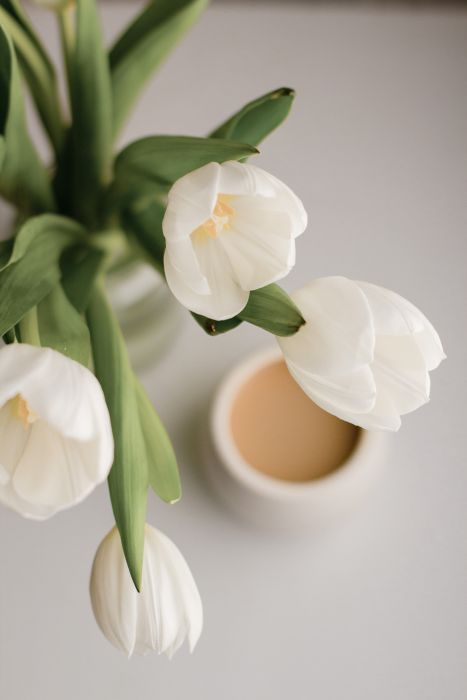
The tulip grows in a wide geographical area from the Iberian Peninsula to North Africa, from Greece to the Balkans, Turkey, Syria, Israel, Palestine, Lebanon, Jordan, Iran, Ukraine, South Siberia, Mongolia and as far as Northwest China. It was brought to Europe for the first time in 1554 and the botanist Carolus Clusius was responsible for the development of many varieties in a wide variety of colours and shapes that found their way into the Dutch royal gardens. Its cultivation in the Netherlands started around 1593. It is used to decorate parks, gardens, flowerbeds, lawns and is grown in pots on terraces or in flats.
The name tulip comes from the Turkish ‘tullband’, which means turban, probably because of its characteristic shape. It is a flower that is very present in Turkish culture and also in many fairy tales, the most famous of which is ‘The Thousand and One Nights’.
In Persian tradition, the red tulip was given by the lover to his beloved. This symbolism stems from the legend of an unhappy love affair. The legend of the Tulips tells of a young prince of Persia, named Farhad, who was deeply in love with one of his maidens named Shirin. One day the prince was given the false news that his beloved had been murdered, so he ran to his horse and galloped off to the highest mountain in the entire empire. Blinded by grief, he let himself fall into the void. His blood spilled all over the ground and many red tulips sprang up. This is why the red tulip is associated with love and passion.
Symbology
The meaning of the tulip is true love. In the Ottoman Empire, it was synonymous with wealth and power as the sultans organised sumptuous feasts in their royal courts to celebrate the first blossoming of the tulip.
Emotional meanings are attributed to the tulip according to the colour of each flower. In the case of yellow tulips, they represent the positive, i.e. everything that has to do with joy and happiness. White tulips are used in religious rituals, as they are closely linked to peace, innocence and purity. Red tulips represent fire, passion and eroticism. Purple is associated with economic prosperity, elegance and refinement. Black tulips are associated with mourning, death and sadness. Pink tulips are pure love and femininity. Blue tulips are used to show loyalty, friendship, trust.
The tulip in cooking
Tulip petals are edible and have a taste reminiscent of peppered lettuce, more or less intense. The use of these flowers in cooking seems to date back to the 16th century. The coloured tulip petals alone can be used in salads or stews with vegetables to make a tasty floral side dish.
The tulip in medicine
The tulip is said to have laxative, emollient and analgesic effects. Its leaves can be used to treat fever. In some places its leaves can replace spinach and the bulb can also be consumed for the amount of fibre it contains. Research is currently underway to find out more about its contributions to fighting cancer cells. The tulip is also thought to have aphrodisiac properties, which is why in many civilisations it is consumed as an infusion to increase sexual desire.

The tulip in cosmetics
This beautiful and exuberant flower has a large number of properties not only related to medicine but also to beauty and care treatments. It is used to treat scalp conditions, as it strengthens the scalp and prevents hair follicles from falling out. Its chemical compounds also help with skin care, keeping the skin moisturised, relieving acne, sunburn and wounds.
In ancient times, it would also appear that tulip flower petals were used as a soothing compress for insect bites, burns and rashes. In the 18th century, girls were also said to use the petals of red tulips to create a paste which they spread on their cheeks as a beauty treatment.

Art could not feign a simpler grace, nor nature a more beautiful line.
(James Montgomery, on tulips)






































